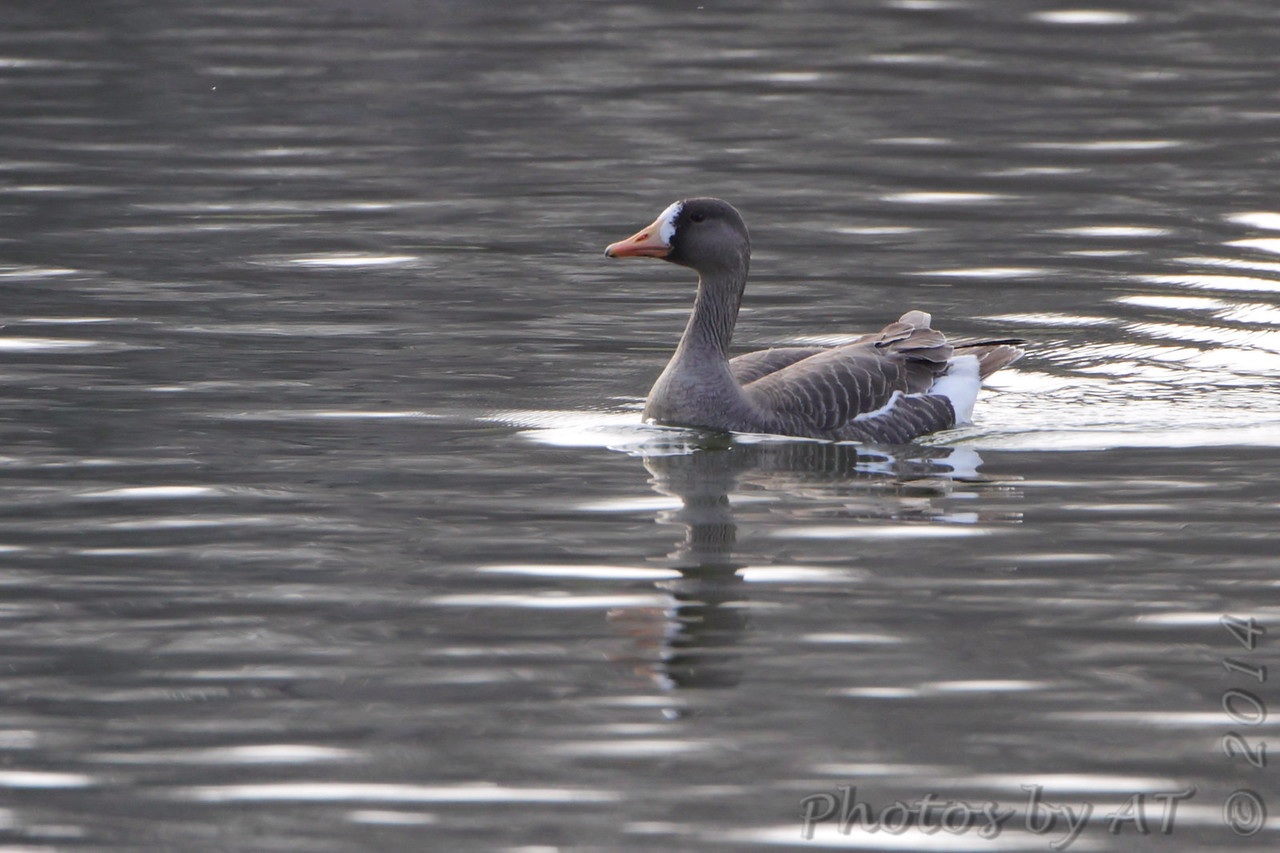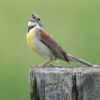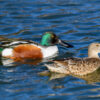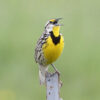Greater White-fronted Goose, Anser albifrons
Bill Rowe
All through October and November, day and night, flocks of geese pass overhead as they migrate from their nesting grounds to their wintering areas. Besides our common Canadas, these include several other species, of which the earliest to appear in numbers is the Greater White-fronted Goose, heading south from the Arctic tundra. For a good look at some on the ground, you can find them in a wetland or perhaps some open fields, but to see them migrating overhead, you can be anywhere. Their high-pitched laughing or “gabbling” calls should make you look up, sometimes so high that it’s hard to spot the loose, ragged V’s of the flocks above you. Of all our geese, this is the only one that is just as common and widespread in the Old World as the New; white-fronts nest across much of arctic Russia and winter in Eurasia. In fact, that’s the only reason they need the word “Greater” in their official name, as there is also a Lesser White-fronted Goose over there. Here in the Americas, the simple “white-fronted goose” is totally appropriate, unless you are writing a formal species list (or a Bird of the Week).
IDENTIFICATION: On the ground, white-fronts are medium-sized geese, smaller than Canadas and lacking the black neck; they are all gray-brown with a narrow white stripe down the side, a pink bill, a white patch at the base of the bill, and some irregular black barring or blotching on the belly—hence the traditional hunters’ name “specklebellies.” Overhead, their rapid, rather musical laughing is very different from the lower honking of Canada Geese and also the more abrupt “barking” of Snow Geese. As with all geese, the sexes are alike, but juvenile birds in fall lack the white “front” and the dark barring.
ST. LOUIS STATUS: Throughout Missouri, but especially in our area, white-fronts have become much more numerous in recent years, both on migration and in the winter. It used to be that finding a white-front in January was an event; now, at sites like Riverlands, there may be flocks of hundreds off and on through the winter.
Learn more and listen to the calls of Greater White-fronted Geese here.




